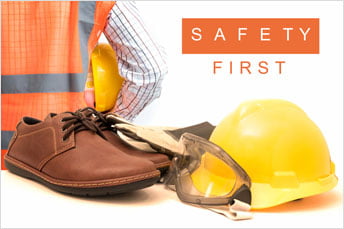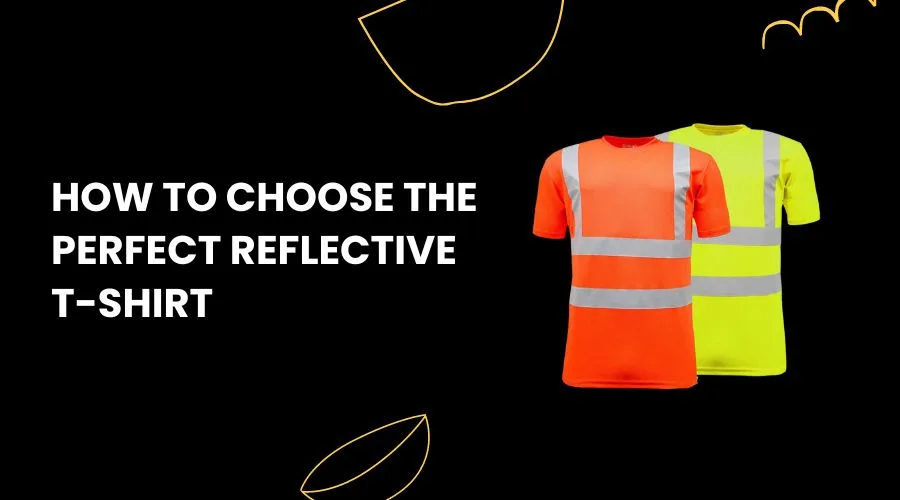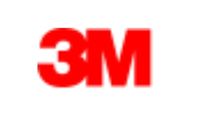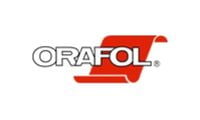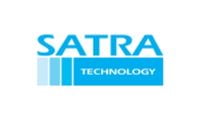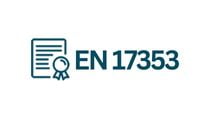
Protection Standards.
Different jobs often require different types of safety equipment. We at Spartan can advise you of the correct standards that you should adhere to in any circumstances.
Head Protection:
EN397, EN812
Eye Protection:
EN169, EN175
Hearing Protection:
EN352
Respiratory Protection:
EN136, EN140, EN141, EN149, EN405
Waterproof Garments
EN343
High Visability Garments:
EN471
Gloves:
EN374-2/3, EN388, EN407, EN420, EN511, EN10819
Fall Arrest Equipment:
EN361, EN363, EN364, EN365
Foot Protection:
EN344, EN345
Head Protection
EN397
Covers protective helmets for industry, where falling objects may do damage.
EN812
Covers bump / shock proof caps where protection is required for the wearer against bumping into objects that are liable to cause minor cuts or superficial injuries.
THEY ARE NOT TO BE WORN FOR PROTECTION AGAINST FALLING OBJECTS, eg: onbuilding sites..
Eye Protection
EN166
This standard is applicable to all types of protective eyewear but does exclude protection against x-rays and lasers.
The eyewear has to be marked with several different numbers or letter which indicate the level of protection against ultraviolet, infra red and mechincal resistance etc.
EN166 1 Optical Class
EN166 F Low Energy Impact
EN166 B Medium Energy Impact
EN166 3 Filters for personal eye protection equipment for welding and related tasks – Scale number 3
EN166 8 Protection against Short Circuit Electric Arc
EN166 9 Non Adherence of molten and resistance to penetration of hot solids
EN169 5 Applies to occular filters for welding and related techniques
EN169 8 Filters for personal eye protection equipment for welding and related tasks – Scale Number 8
EN175 This is the standard for equipment when welding
Prescription Safety Spectacles
We can offer a full prescription service
Please contact our sales department for full details
Hearing Protection
EN352
EN352-1 Safety regulations for Ear Protection – Ear Muffs
EN352-2 Safety regulations for Ear protection – Ear plugs
EN352-3 Safety regulations for Ear protection – Ear muff attched to a helmet
Respiratory Protection
Control of Substances Hazardous to health (COSHH) was established to meet the requiements of EC DIrective 80/1107/EEC and its aim is to control the use of substances that can be potentially damaging to health.
It is an employers duty to carry out a comprehensive risk assessment of the work environment, if it is belived to be hazardous. An HSE agent can do this and provide a written report detailing respiratory occupational exsposure limits (OEL) for workers. This report provides figures for the correct selection of suitable respiratory protection.
Before selecting a mask or filters please ensure that they are suitable protection against the perceived hazard. If in any doubt please consult our office for advice.
EN136
This covers the minimum requirements for full masks
and includes resistance to temparture, impacts, flame, thermal radiation, traction, cleansers and disinfectants
EN140
Minimun requirements for half masks
EN141
Minimun requirements for gas and compound filter
EN143
Minimun requirements for the filters
EN149
Minimun requirements for disposable masks
EN405
Minimun requirements for half masks fitted with valves or filters
Weather Resistant & Breathable
EN343
Foul Weather Clothing Water Proof
There are two parts to the standard, each having three levels of protection.
A
Resistance to water penetration
This is the garments waterproof level (0 – 3)
0 – No Protection
3 – Highest level of protection
B
Steaming Resistance
This is the garments breathability level (0 – 3)
0 – No Protection
3 – Highest level of protection
Application field
The present standard specifies the protective garments characteristics against the influence of atmospheric exposures, wind and cold above -5c
The first number on the right of the pictogram indicates the class of resistance to water penetration, the second one the class of streaming resistance.
GORT3279 – Railway Group Standard for High Visibility Clothing
ES510 – Quick Release fasteners for railways vests and waistcoats
EN531 – Flame Retardant
EN533 – Flame Spread
EN470 – Molten Metal (Welding)
High Visability Clothing
EN471
High Visability Specifications
There are three levels of protection.
Class 1
Class 1 defines the lowest visibility level
E.G. High Visibility trousers with two 5cm reflective bands around each leg. These become Class 3 when worn with a Class 3 jacket.
Class 2
The class 2 defines an intermediary visibility level. Example: vests. Two 5cm bands of reflective around body or on one 5cm band around body and braces to both shoulders.
Class 3
The class 3 defines the highest level of visibility. Example jacket with long sleeves, jacket and trouser suit. Two 5cm bands of reflective tape around the body, arms and braces over both shoulders.
Gloves
EN407:2004
Protective gloves against thermal risks (heat and/or fire).
Protective gloves, Protective clothing, Occupational safety, Insulating gloves, Gloves, Thermal protection, Heat protection, Fire safety, Fire resistance, Thermal resistance, Thermal stability, Fire-resistant materials, Flameproof materials, Performance.
EN420
Safety regulations for working gloves – sizing,
composition, packing & user information
EN388
Protective gloves for mechanical risks – 4 levels
This covers the physical and mechanical stresses that can applied to a glove and the levels of resistance on a grading from 1 to 5, where 1 is the lowest
EN374-2
Protective for micro organisms
EN374-3
Protective for chemicals
This covers chemical risks where the first number if the performance level and the second the requirement. 1 being the lowest. If in any doubt whatsoever please contact the office for advice. If a gloves is described as chemically resistant, it does not mean it is resistant to ALL chemicals
EN511
Protective for cold working hazards – 3 levels
The first is resitance to convective (0-4), the second is contact (0-5), the third water penetration (0 or 1)
EN10819
This standard deals with protection against vibration and impacts of mechanical origin. For full details please contact our office for advice
EN381-7
Protective Clothing – A and B protection regulations for anti-cut gloves
Fall Arrest Equipment
The single biggest risk in life and safety of people working in the construction industry is falling from height. It is the responsibility of the employer to ensure that employees are properly protected – legislation insists upon it. Tractel manufactures a wide range of temporary and permenant personal fall arrest equipment to suit a variety of working aplications that conform with these standards
EN358
Personal protective equipment for work positioning and prevention of falls from a height. Belts for work positioning and restraint and work positioning lanyards
EN361
Personal protective equipment against falls from a height.
Full body harnesses
EN363
Protection against falls from heights
Fall arrest systems which must include a harness and a fall arrester
EN364
Protection against falls from heights – test methods
EN365
Protection against falls from heights – general
requirements for use and marking
There are various other standards that apply to each part of a full system. A full range of Tractel materials handling, safety, access and fall arrest equipment to suit a variety of applications is available on request. If you require any further information please contact our office for further advice
Foot Protection
All safety footwear is manufactured to EN345 and has been designed with fashion, style and safety put together to make it a pleasure for the user to wear them. It is essentail that a full risk assessment is first carried out so that style and material to compliment the working envionment can be selected.
EN344
Standards for professional safety footwear
This standard defines the gneral requirements and test methods for safety footwear and should only be used in conjunction with EN345
EN345
Standards for professional safety footwear
This standard defines, in reference to the EN344 standards, the basic and additional (optional) requirements on safety shoes for
proffseional use. This shoes include devices to protect the user against injuries caused by accidents liable to occur in the industrial environment for which the shoes had been designed. These
products are fitted with safety toe caps intended to deliver a protection against impacts with an energy level equal to 200 joules
Class 1
All material except natural and synthetic polymers
The properties represent the combinations of the most widespread requirements.
SB
Safety Footwear – Standard with leather upper & steel toe cap
S1
Safety Footwear – Standard safety properties plus antistatic with shock absorbent sole
S2
Safety Footwear – Standard safety properties plus antistatic with shock absorbent sole with water resistant upper
S3
Safety footwear – Standard safety properties plus antistatic with shock absorbent sole with water resistant upper with steel midsole
Class 2
Natural and synthetic polymers
S4
Safety Footwear – Standard safety properties plus antistatic with shock absorbent sole
S5
Safety footwear – Standard safety properties plus antistatic with shock absorbent sole with water resistant upper with steel midsole
P
Anti Puncture Sole
HI
Insulation against heat
CI
Insulation against cold
HRO
Heat resistant sole to 300°C
C
Electrical Resistance
INTERNATIONAL PPE STANDARDS REFERENCE
Below is the list and brief introduction of commonly used international Standards in this industry. For more detailed information, please contact our customer service team.
High visibility clothing for professional use
EN ISO 20471:2013
The International Organization for Standardization released on 28th June 2013 the new EN ISO 20471:2013 standard for the test methods and requirements of high visibility clothing. All EEC Type Examination Certificates based on EN 471 for high visibility clothing became invalid on 1st October 2013 regardless of any other mentioned validity date. Requirements are included for color, retro reflection and Physiological performance as well as for the minimum areas of visible material in high visibility clothing. To get more detailed information on requirements of EN ISO 20471, please contact our service staff or send us emails.
ANSI/ISEA 107-2010
ANSI/ISEA 107-2010 is the American National Standard for High-Visibility Safety Apparel and Headwear. This standard provides an authoritative guide for the design, color, photometric and physical performance, use and test methods of high-visibility safety apparel including safety vests, hi vis jackets, bib coveralls, pants and harnesses. Based on different work environment, the standard classified the performance into three classes. To get more detailed information on guidance provided by ANSI/ISEA 107-2010, please contact our service staff or send us emails.
AS/NZS 1906.4-2010
AS/NZS 1906.4:2010 is the joint Australian/New Zealand Standard for retro reflective materials and devices for road traffic control purposes. It specifies the photometric, colorimetric and physical property requirements for high-visibility materials to be used in high visibility safety clothing, rather than the clothing themselves. The design requirements for high-visibility clothing are specified in AS/NZS 4602.1. For more detailed information, you’re welcomed to consult our service staff online or by email.
CAN/CSA Z96-02
CAN/CSA Z96-02, the high visibility apparel standard by Canadian Standards Association, provides requirements for three levels of retro-reflective materials to be used in high-visibility apparel relating to the minimum areas and placement of these materials. It also specifies requirements for three classes of high visibility clothing. CSA Z96-02 approved high visibility clothing shall be worn by all workers who are likely to exposed to the traffic hazards. For more guidance provided by this standard, please don’t hesitate to contact our service staff.
High visibility clothing for non-professional use
BS EN 1150:1999
BS EN 1150:1999 is the British-adopted European standards for non-professional use visibility clothing, which specifies the optical photometric, colorimetric and physical property performance of retro-reflective material, as well as the requirements for high visibility clothing designed for non-professional use and to be worn by juveniles or adults who want to enhance the visibility in any light conditions. Consult our service staff for detailed information into the standards.
Flame Resistant Textile Materials for Wearing Apparel
EN ISO 14116:2008 (BS EN 533:1997)
EN ISO 14116:2008 supersedes BS EN 533:1997 in providing more comprehensive information on the performance requirements for the limited flame spread properties of materials and material assemblies used in protective clothing in European countries. The protective clothing is intended to protect workers against accidental contact with small flames and without significant heat hazard. For protection against heat hazards, we are glad to introduce you EN ISO 11612: Protective clothing against heat and flame, the revised version of EN 531:1995: Protective clothing for workers exposed to heat.
ASTM F 1506
ASTM F1506, standard performance specification for flame resistant textile material testing and apparels made from compliant materials. The protective clothing are to be used by electrical workers exposed to momentary electric arc and related thermal hazards. Specific requirements for flammability test before and after 25 washes, arc thermal performance test, labeling, thread, and closures and periodical retesting are included in the specification. If you are interested to know more information about this standard and our product compliances, please contact our service staff.
NFPA 701
NFPA 701 is a national standard of United States developed by the National Fire Protection Association (NFPA). It establishes test methods to assess the propagation of flame of various textiles and films under specified fire test conditions. NFPA has various standards depending on how the fabric will be used. In the case of draperies, curtains, and similar hanging textiles, NFPA 701 applies. The testing measures the ignition resistance of a fabric after it is exposed to a flame for 12 seconds. The flame, char length, and flaming residue are recorded to meet certain criteria. For more detailed information, please consult our service staff online or by email.
Visibility accessories for non-professional use
BS EN 13356: 2001
BS EN 13356: 2001, the British standard for visibility accessories for non-professional use, specifies the optical performance requirements for accessories which are to be worn, attached to or carried by people and designed for non-professional use. Visibility accessories complying with this standard are intends to improve the road users’ visibility and enhance their safety while using the product. In case of any questions on details of this standard, our service staff is ready to answer them for you.
Testing for harmful substances in textiles
OEKO-TEX Standard 100
The OEKO-TEX Standard 100 is an independent testing and certification system for textile raw materials, intermediate and end products at all stages of production. That means in addition to the outer material, the sewing threads, linings, prints etc. as well as non-textile accessories such as buttons, zip fasteners, rivets etc. also have to comply with the criteria. OEKO-TEX testing for harmful substances including illegal substances, legally regulated substances, known harmful (but not legally regulated) chemicals and parameters for health care. According to the actual use of the textile, there are four product classes. The more intensive the product contacts to the skin, the stricter the human ecological requirements to be met. For more detailed information on the standard and our product certificates, you’re welcomed to contact our service staff.

